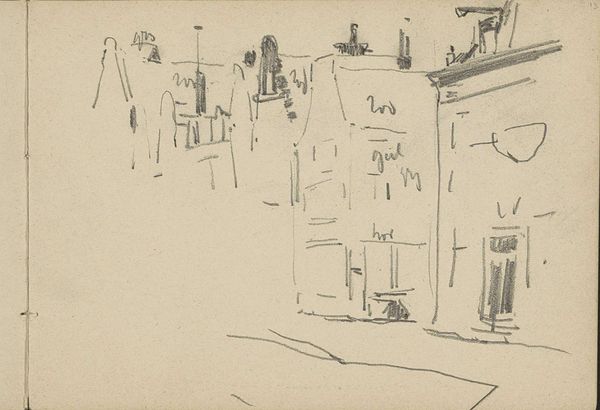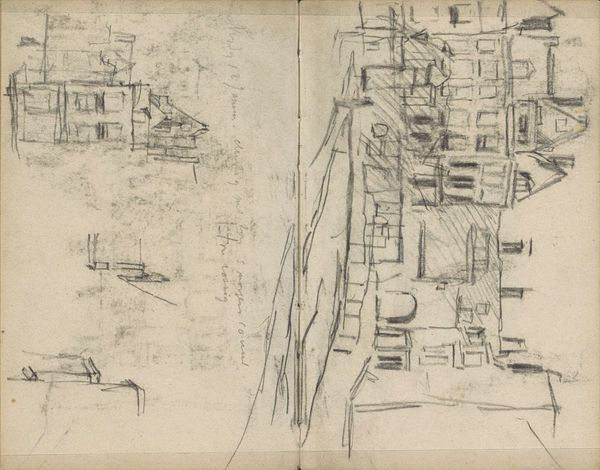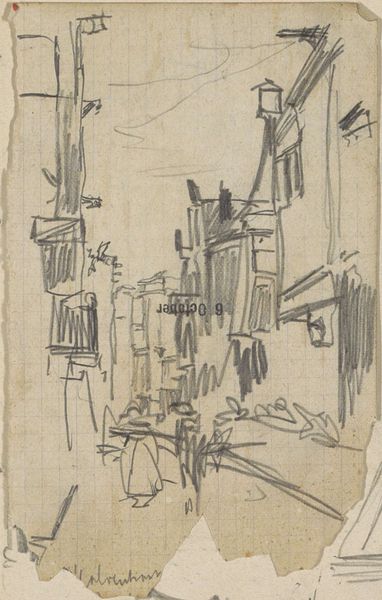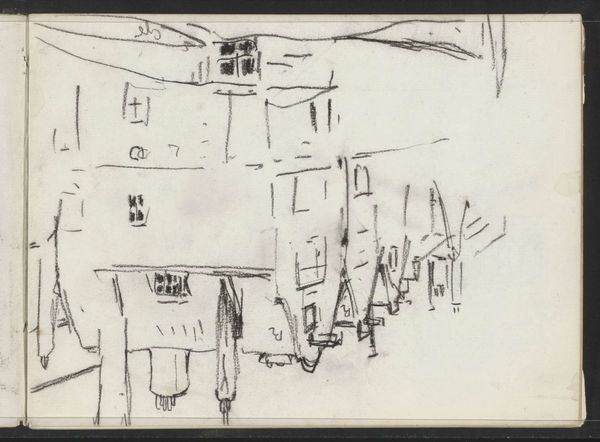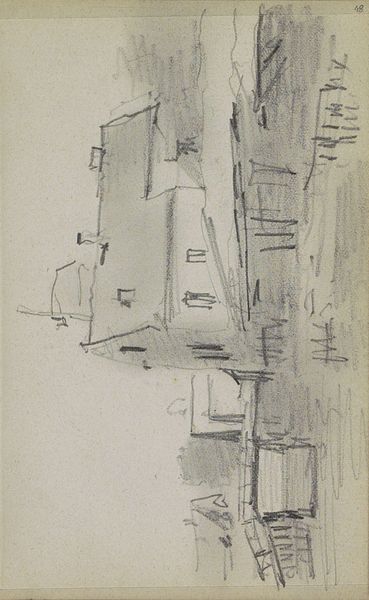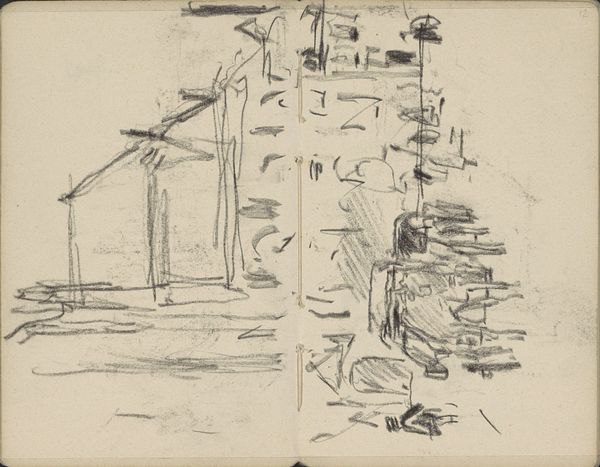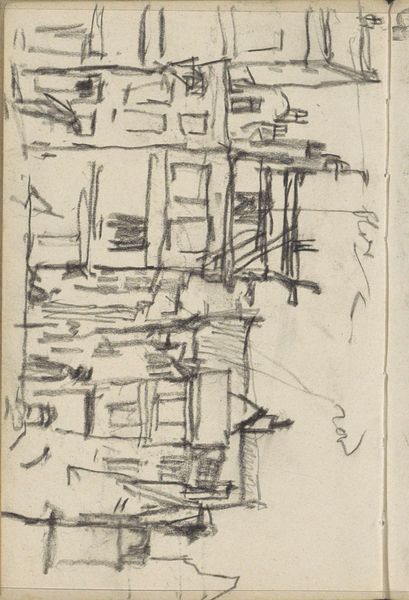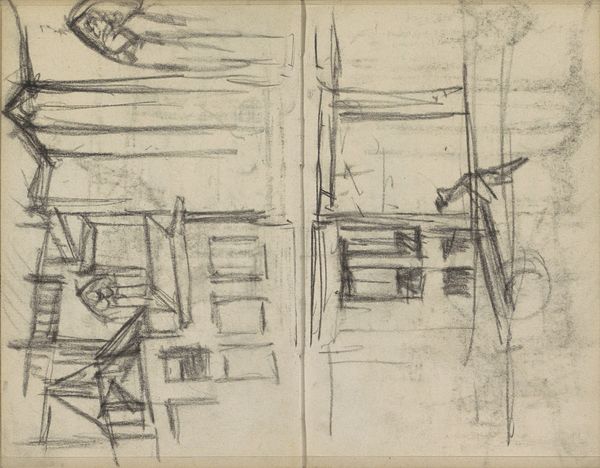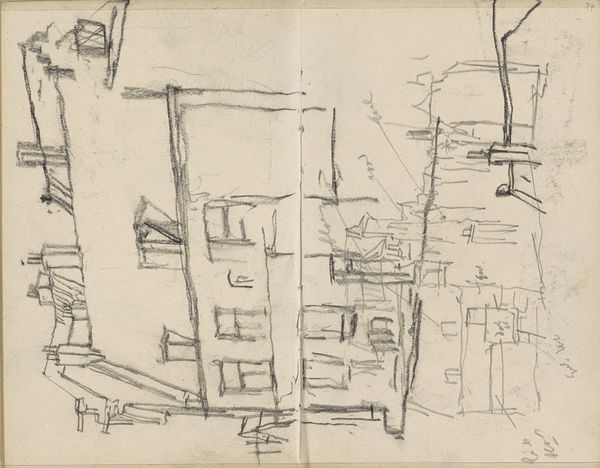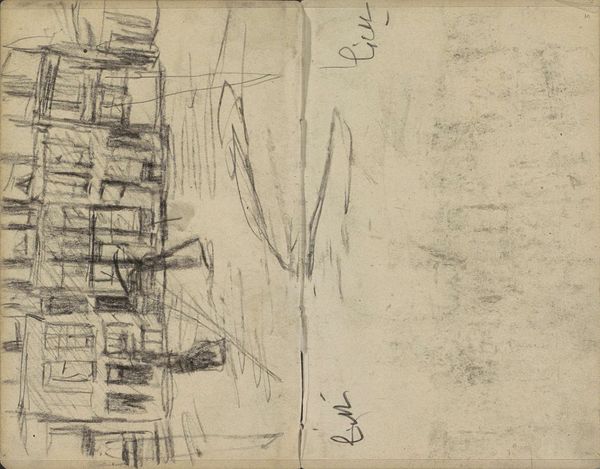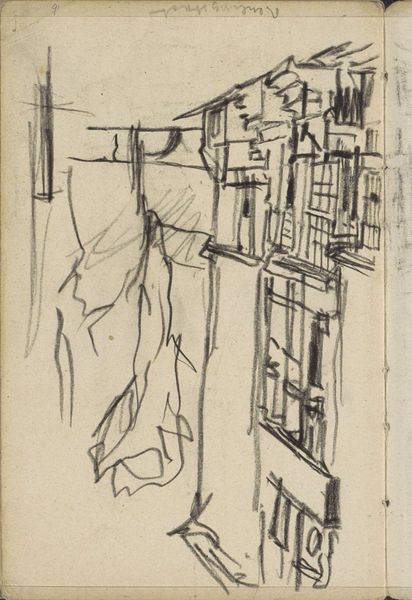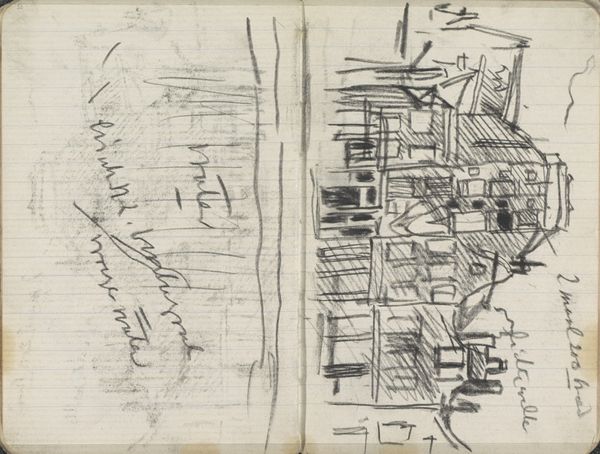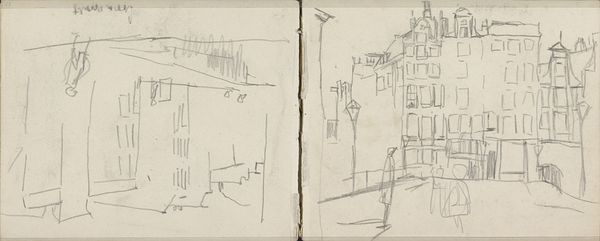
Gezicht op de Lindengracht te Amsterdam ter hoogte van de Tweede Lindendwarsstraat 1893
0:00
0:00
georgehendrikbreitner
Rijksmuseum
Copyright: Rijks Museum: Open Domain
Editor: So, here we have George Hendrik Breitner's "View of the Lindengracht in Amsterdam near the Tweede Lindendwarsstraat" from 1893, done in graphite. There's a really raw quality to it, almost like a charcoal sketch, that makes it feel unfinished. What stands out to you about this work? Curator: Immediately, I see the urban anxiety of a rapidly changing Amsterdam. Breitner uses stark lines, the density of the graphite mirroring the cramped reality of city life, that feels weighty and somewhat oppressive, right? It almost feels like it traps the image within. Does it communicate that to you as well? Editor: I can definitely see that tension. I suppose it’s not romanticized like other cityscapes I've seen. Curator: Exactly. He's using the visual language of realism but hinting at something deeper, a psychological weight. Look at the buildings themselves, looming, their shapes almost suffocating. Consider the tradition of Dutch cityscape painting... Breitner is turning away from idealized views towards something more... truthful. There's no attempt to prettify or idealize urbanity. Editor: That makes sense, now I can see a bit more clearly what the images are telling me beyond their obvious qualities. Curator: Precisely. It's a study of how the modern urban landscape can imprint itself on our collective consciousness. How those symbols shape us and inform who we are within these landscapes. Editor: This has given me a fresh appreciation for the piece; I understand it’s beyond just being an unrefined study. Curator: Absolutely, the way it communicates the psyche of a place is as profound as the technical skills used.
Comments
No comments
Be the first to comment and join the conversation on the ultimate creative platform.
